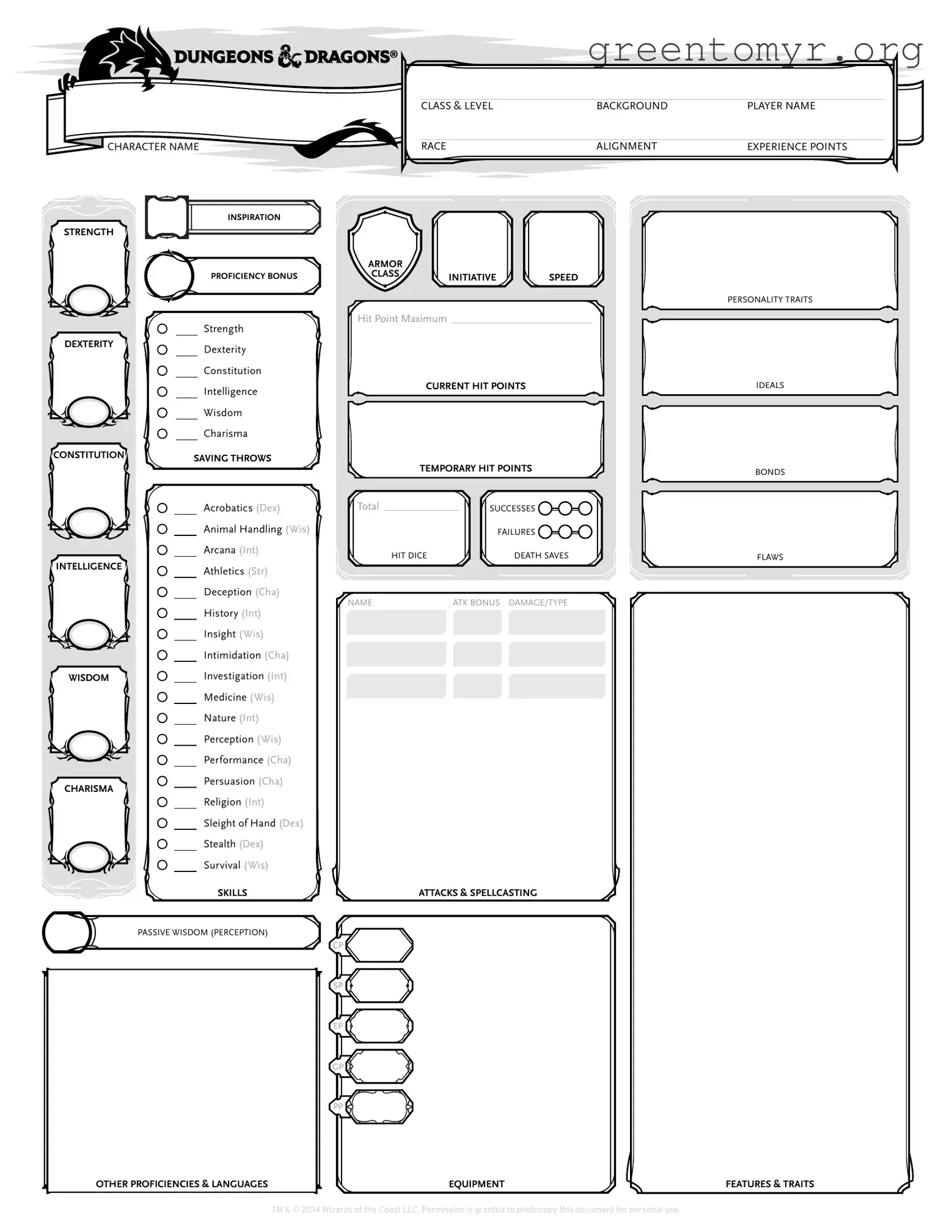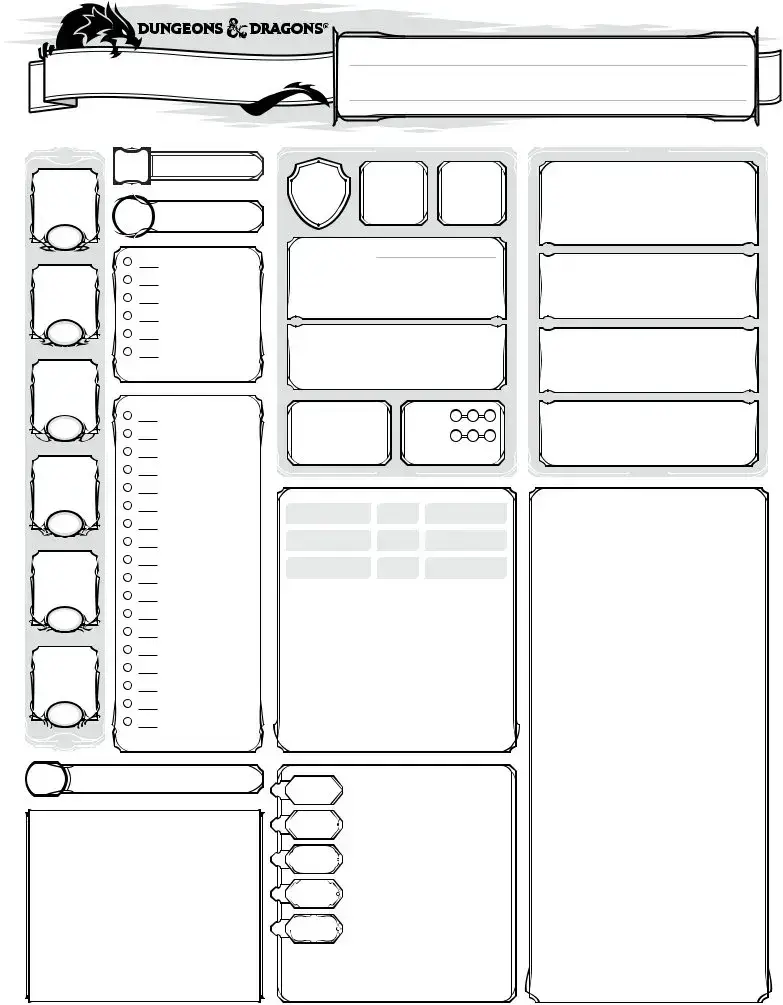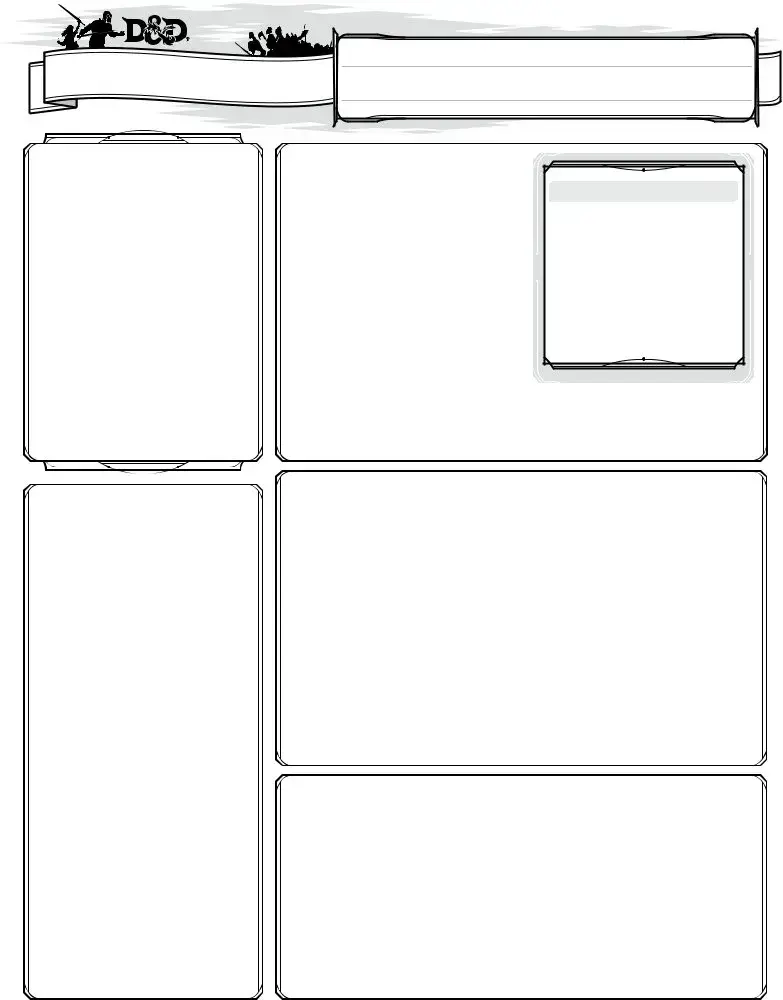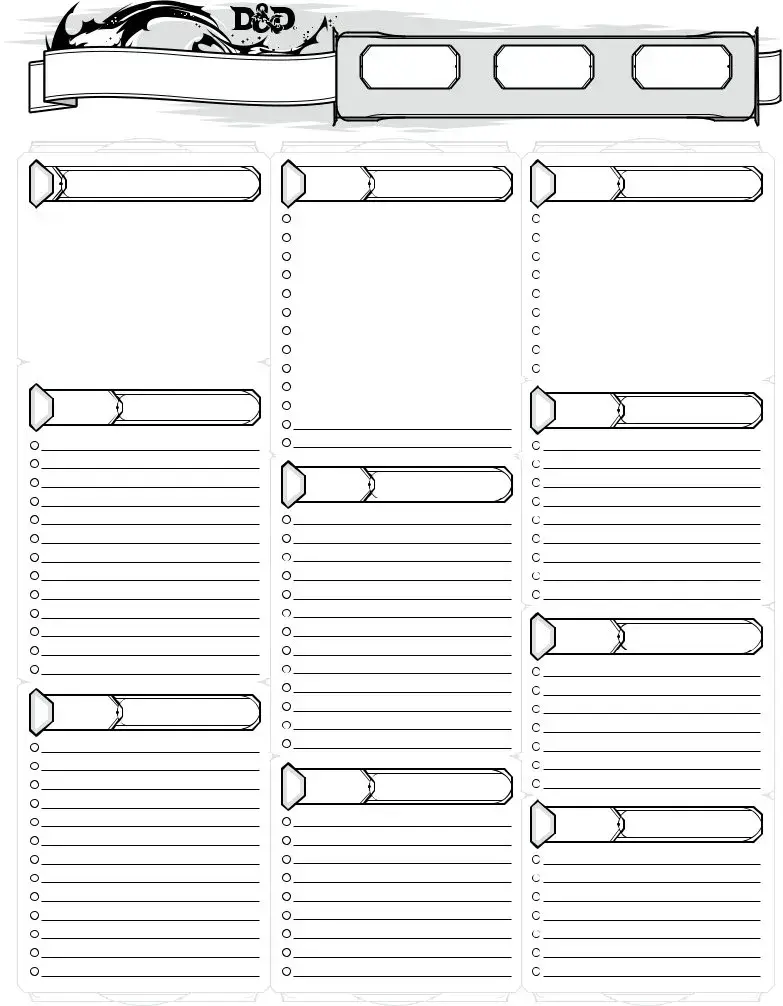The Dungeons & Dragons (D&D) character sheet is an essential tool for players, providing a structured way to record and manage the multifaceted aspects of their characters. It includes various sections that detail vital statistics, skills, abilities, and equipment, ensuring that players have a comprehensive overview of their character’s capabilities and resources at a glance. The sheet also contains information about character background, race, class, and alignment, which help to deepen the role-playing experience. By detailing hit points, armor class, and saving throws, the character sheet allows players to navigate combat scenarios with clarity and confidence. Additionally, it offers space for spells, inventories, and personal notes, enabling a dynamic and flexible approach to gameplay. The character sheet not only serves as a narrative foundation for engaging storytelling but also organizes game mechanics in a way that enhances efficiency during sessions. Understanding how to utilize this form effectively can significantly enrich the gaming experience, facilitating smoother interactions and fostering creativity in character development.













